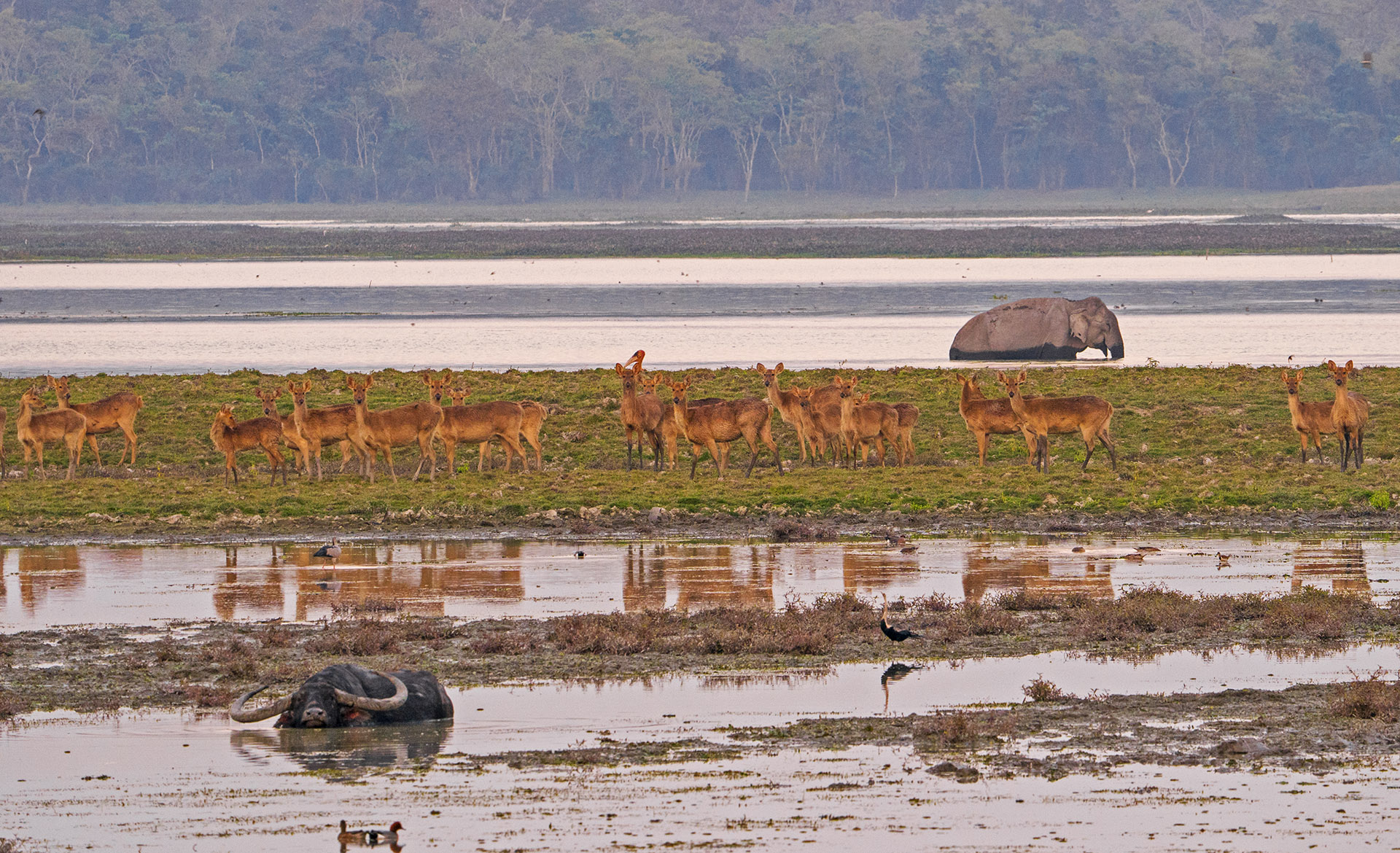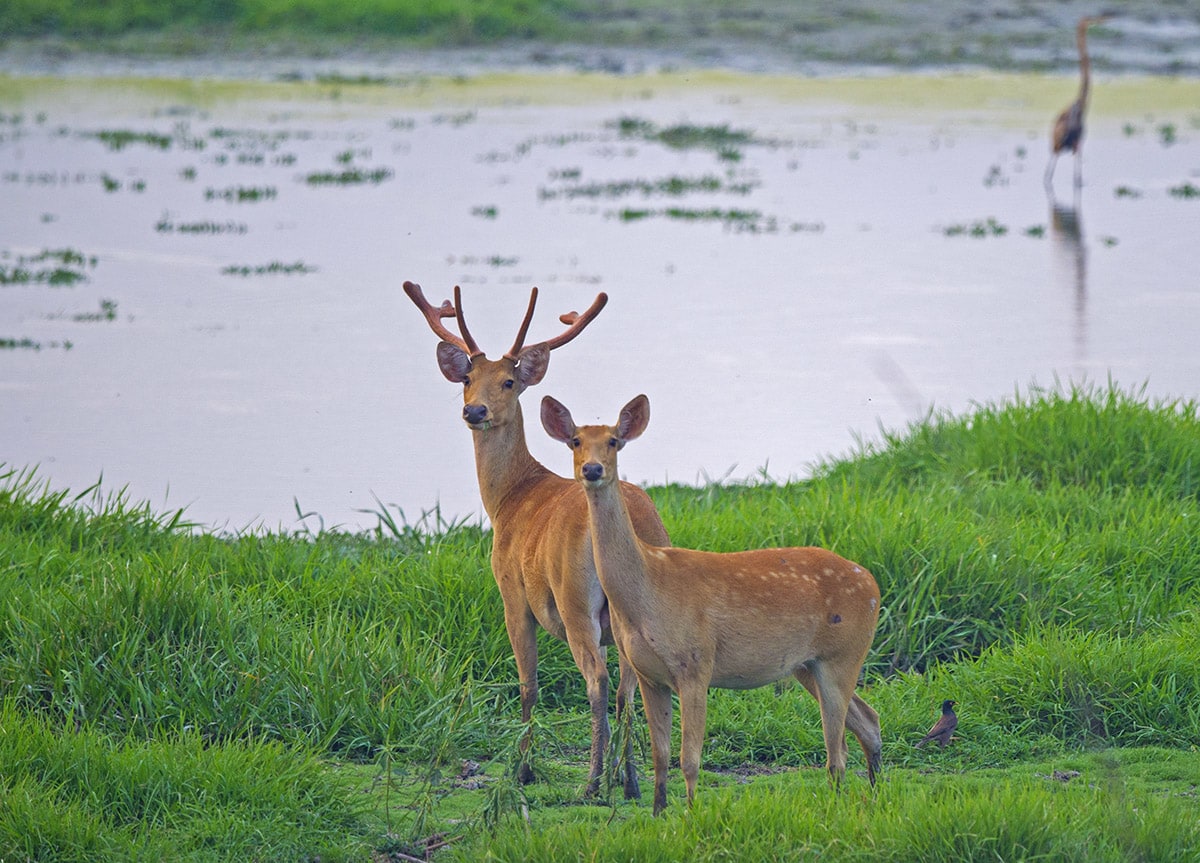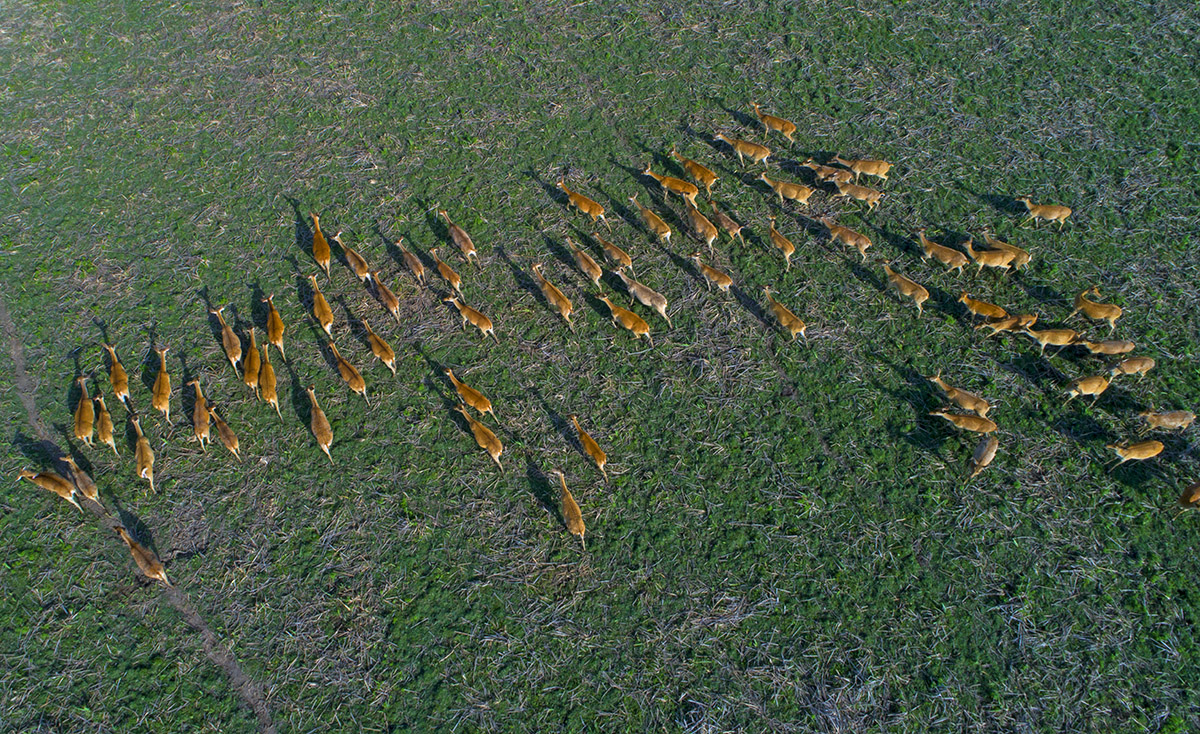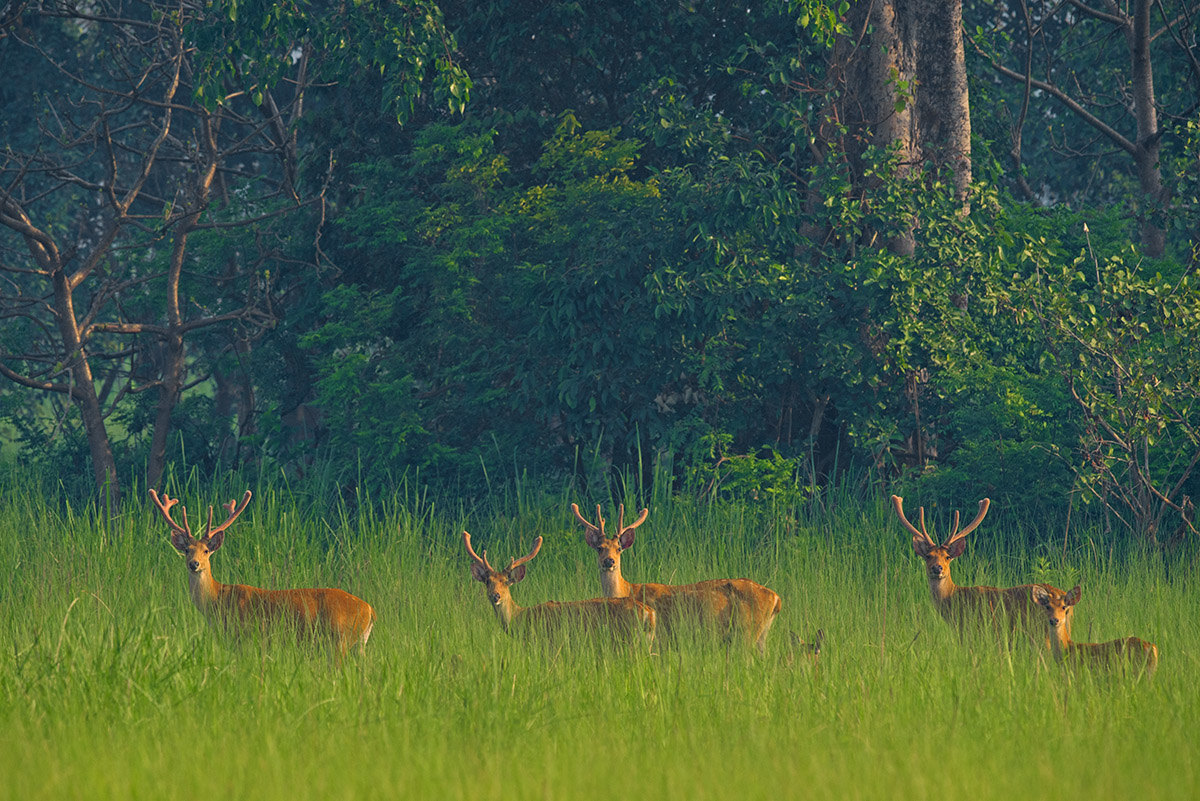Herds of deer are fascinating in the way they balance competition and collaboration. Grazing nonchalantly or running from predators, there is a sense of grace, harmony, and unison in the way they function. Sometimes members go neck-to-neck (or antler-to antler) in fights to establish hierarchy within the group. Most often though, herds work together, collaboratively, with an almost telepathic connection that is amazing to witness.
This is especially true for the gregarious swamp deer or barasingha, one of the 20-odd species of deer found in India. They inhabit the grasslands of Uttar Pradesh, Uttarakhand, Madhya Pradesh, and Assam, though they roamed the breadth of the Gangetic plains a few decades ago. Of late, barasingha conservation has been a mixed bag. On the one hand, their numbers are dropping, largely due to habitat loss. On the other hand, conservation efforts to reintroduce herds to areas without barasinghas have reported some success. There are now around 3-4,000 swamp deer on the planet, found in Nepal and India.

Herds of eastern swamp deer live in Assam’s Kaziranga National Park, feeding alongside other water-loving herbivores and birds. This particular subspecies is characterised by splayed hooves, suited to the sanctuary’s marshy grasslands.

The western barasingha prefers the marshy grasslands of the Gangetic plains and has been sighted in Hastinapur, Dudhwa, and Katerniaghat wildlife sanctuaries in Uttar Pradesh, and in Jhilmil Taal in Uttarakhand. They too have splayed hooves, like their counterparts in the east, but there is a difference in the antler structure between the two subspecies.

Like many deer, barasinghas seek safety in numbers. All three subspecies are highly social, and roam in herds which may have a few dozens to a few hundred members. It is the only way they have a fighting chance against predators such as the tiger and leopard that roam these parts. “There are records of barasingha herds numbering over 3,000,” says Dr Asad Rahmani, one of India’s finest wetland conservationists and the former Director of Bombay Natural History Society. “But that was a long time ago.”
The southern swamp deer is a little different from the eastern and western swamp deer. This subspecies has hard hooves adapted to the sal forests of Central India, and can be found in Kanha National Park, and more recently, also in the Satpura reserve, where small populations have been reintroduced.

The barasingha’s future is intrinsically linked to the future of their grassland homes. Unfortunately for these ungulates, their ecosystem is deeply undervalued in India, with large chunks being converted to agricultural and industrial land every year. This reduces the size of the swamp deer’s habitat, but also (often) brings contaminants into the area, which has a long-lasting effect on human water sources as well.